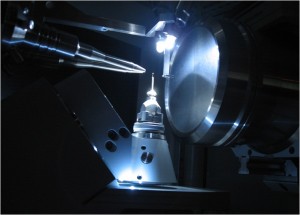Part II Research Projects Available 2021-2022
 A range of part II projects are available in the Chemical Crystallography group for the academic year 2021/2022, working with Prof. Richard I. Cooper (RIC), and Dr. Amber L. Thompson (ALT). Visit Chemical Crystallography in the CRL basement laboratory to meet the group and find out more information [contact details].
A range of part II projects are available in the Chemical Crystallography group for the academic year 2021/2022, working with Prof. Richard I. Cooper (RIC), and Dr. Amber L. Thompson (ALT). Visit Chemical Crystallography in the CRL basement laboratory to meet the group and find out more information [contact details].
Some recent and ongoing projects
Modulated Phases in Barluenga’s Reagent (ALT)
The BF4– salt of Barluenga’s Reagent has been shown to have a novel phase transition; changing the anion and studying its influence on the phase transition will improve our understanding of the solid state.
Machine Learning Algorithms Applied to Prediction of Physical Properties of Materials and Material Discovery (RIC)
Algorithms can be trained to compute properties of materials (e.g. solubility, melting points, crystallisation propensity) given a set of appropriate input descriptors. Predictive models of crystallisation propensity will be developed and tested experimentally. Development of query-based active learning to explore co-crystal formulation space in an efficient and useful order.
Automation of Crystallographic Structure Modelling (RIC)
Development and testing of new tools for use in refinement within the crystallographic suite, CRYSTALS. These include: parameterized mathematical models of scattering density (e.g. hindered curved distributions of atomic positions); novel restraints and constraints for the inclusion of chemical and physical information in diffraction analyses.
Host-guest Complexes of Deoxycholic Acid (led by Dr. Nicholas Rees)
The steroid deoxycholic acid forms host-guest complexes with small organic molecules. These systems display interesting chiral selectivity, phase transition and dynamic behaviour, which will be studied using a combination of solid state NMR and X-ray crystallography.
Other potential projects
Polymorphism in Pharmaceutical Compounds
Crystallisation and characterisation of pharmaceutically active materials by X-ray diffraction, solid state NMR, variable temperature microscopy and DFT.
When are High Z’ Structures Really Modulated?
Data mining and analysis to determine the causes of high Z’ structures and conclude whether a modulated description provides a better approach.
Trimesic Acid and Analogous Materials as Building-blocks in Framework Materials (Kirsten Christensen)
Structure, reactivity, polymorphic behaviour and framework forming tendencies of simple carboxylates.
Alternative Approaches to Hydrogen Atom Location in the Solid State (led by Dr. Nicholas Rees)
X-ray diffraction looks at electron density whereas neutron diffraction looks at the position of the nucleus. DFT calculations using the CASTEP code will be used to minimize the structures and predict the experimental solid state NMR parameters for a series of molecular crystals.